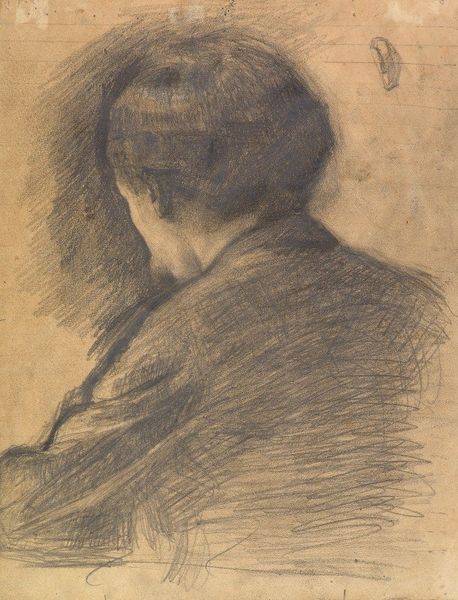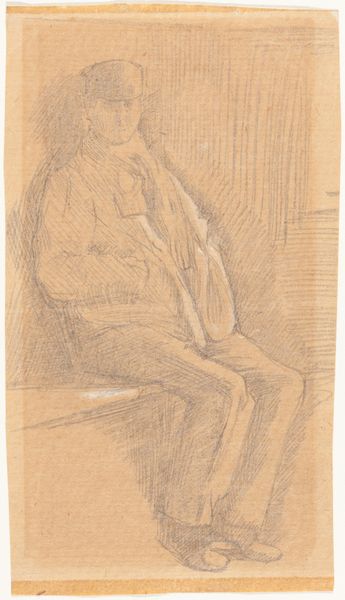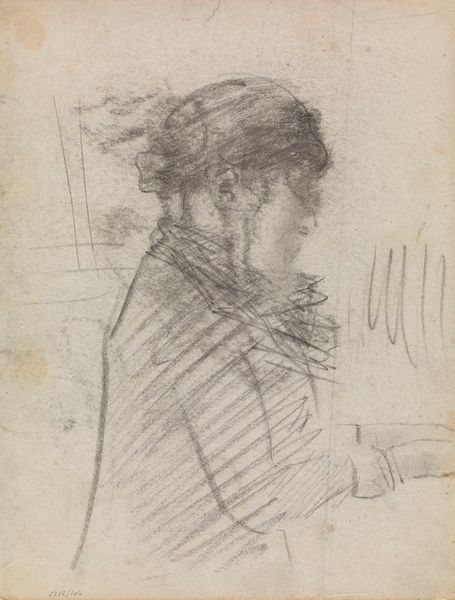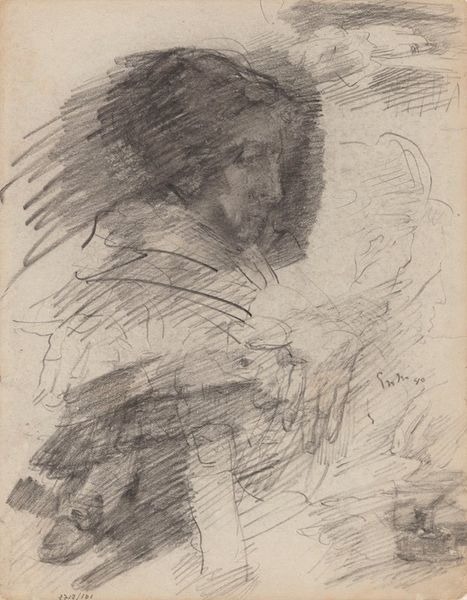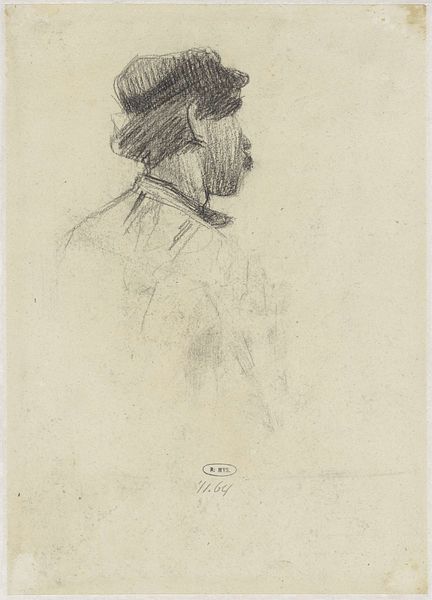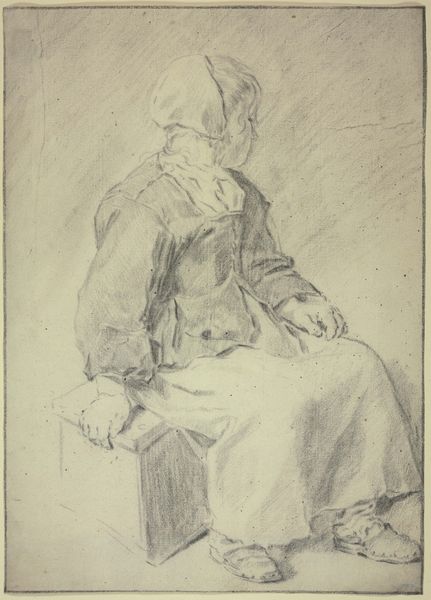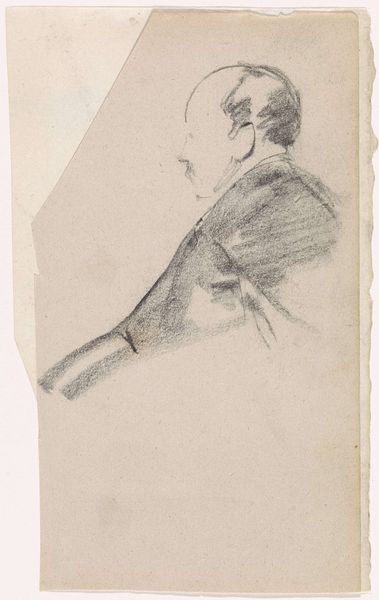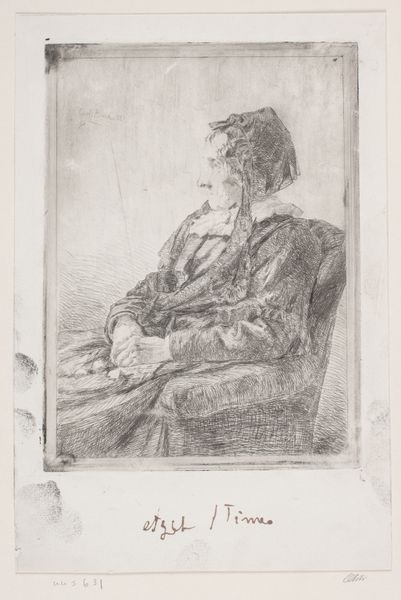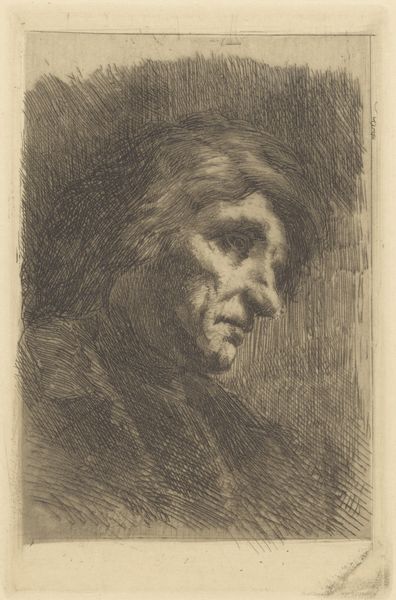
drawing, pencil
#
portrait
#
drawing
#
pencil drawing
#
pencil
#
symbolism
#
realism
Dimensions: 247 mm (height) x 189 mm (width) (bladmaal)
Editor: This is "Self-Portrait seen from behind," a pencil drawing created in 1898 by Vilhelm Hammershøi. It feels very quiet, almost melancholic. You only see the back of a man's head, and it's rendered in such muted tones. What strikes you most about this piece? Curator: Ah, Hammershøi. He has a talent for stillness. To me, the striking thing about this self-portrait is precisely what isn't there. We are denied a direct gaze, a conventional portrayal. This forces us to really contemplate the interior world he's presenting. There is a quiet intensity here, a sort of meditative observation of self. Do you sense the artist is withholding something from us? Editor: Yes, definitely! It feels very private. It's like we're intruding on a moment of reflection, but we're not allowed to see what he’s reflecting on. Is this typical of his other works? Curator: Absolutely. Hammershøi often positioned figures with their backs to us. Think about the many interiors he painted. His unique blend of realism and symbolism conjures up quiet, contemplative moods. Consider the simple act of turning away – what stories can be found there? Why choose not to engage directly? Is it an invitation to step into their shoes, or to merely witness a private moment? Perhaps a little of both? Editor: I guess it makes sense that a portrait doesn't always have to show a face to capture a likeness. By turning his back to the viewer, Hammershøi presents a totally new kind of emotional insight! Curator: Exactly! It suggests that identity isn't always about appearance, sometimes it's about the stance, the posture, the very act of observing the world around you from a particular vantage point. Food for thought, isn't it? I appreciate your astute take!
Comments
No comments
Be the first to comment and join the conversation on the ultimate creative platform.
